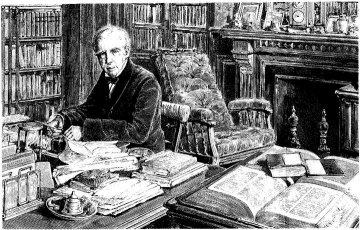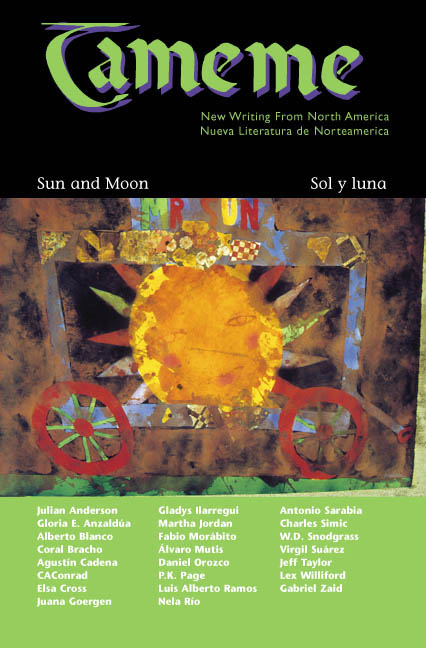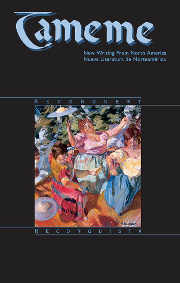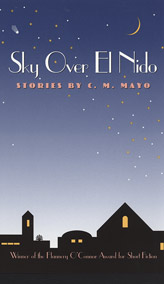|
Author of The Last Prince of the Mexican Empire, etc. |
|
|
|
Dan
Wickett Interviews C.M. Mayo for the And thanks to you, Dan. I am really encouraged by what you're doing, using the internet to open up the discussion of books. Thanks for including mine. I notice that on the lead-in page to Tameme issues,C.M. Mayo is listed as the Editor in Chief, while your real name, Catherine Mansell, is listed below as having some other editorial responsibilities. Is this some sort of a Prince-like division of your various personalities? It's actually kind of complicated.
Catherine Mansell is my legal name, and to be listed as an officer
of Tameme, Inc, the nonprofit foundation that publishes the journal,
that's the name I need to use. In Mexico, however, my legal name
is Catherine Mansell Mayo, because, as in all Spanish-speaking
countries, one's maternal family name is added on at the end.
I've been a resident of Mexico City since 1986 and so half the
things in my wallet, from my drivers license to my credit card
say "Catherine Mansell Mayo." Hence, C.M. Mayo.
Which website? I'm surprised you got that impression. I am guessing you looked at Tameme's website, www.tameme.org, because there is also a website I maintain for my own work, (and for my writing students) which is www.cmmayo.com You are correct, I was looking at the Tameme site when I made that assumption. Your writing site is wonderful as well, and I'll get to that, but could you explain the objectives behind Tameme? Its objectives are to bring new
writing from North American both north and south, and to provide
a forum for the art of literary Spanish/ English translation.
Everything (except the translators notes) is published side-by-side
with its translation, either from the Spanish or from the English,
for unblinking comparison with the original. Tameme by the way,
is a Nahuatl word for "porter" or "messenger."
It is pronounced "ta-meh-meh." What do you consider the greatest accomplishment of Tameme— getting the various cultures aware of each other, or discovering new writers, or perhaps some other aspect? I hope Tameme has helped
introduce writers to new readers across borders, but more than
anything I hope Tameme has made Canadian, US and Mexican
readers and writers more aware of one another. We share the same
subcontinent, and like it or not, we are becoming ever more intertwined
economically, financially, and culturally. Who have been some of the more exciting new writers you are exposing to audiences through Tameme?
In your readings, have you found that the various cultures are writing about similar themes? Each writer is so unique—that's what stands out to me. Do you strive to hit a half and half distribution between works written in Spanish and translated and those written in English and translated, or does Tameme not worry about such quotas? Yes, I do strive for precisely that balance. Have you found it easier to find great translators going from English to Spanish, or vice versa? About the same. There are many wonderful translators out there. You give the translators a great deal of credit in your journal don't you? They deserve it! Few people,
until they attempt it, realize how much work and how much art
goes into a literary translation. It is a mystery to me why more
credit is not given to translators. With Tameme, you give the reader side by side translations of writings. Many works nowadays have added authenticity by having some dialogue in the language of the character, with no translation. Do you feel that it should be up to the reader to have language translation dictionaries or should the author make an effort to include a translation without being wordy? It's tricky. The writer (or translator)
has to make a judgement call— and relevant questions to
ask might be, are my intended readers fully bilingual, or readers
who don't know a word of Spanish beyond, "taco"? Your personal website has a pretty extensive section which could be used as a workshop. Was the "On Publishing the Literary Short Story" written for a specific event? It is a great, detailed essay on the topic. Thanks, I'm glad you liked it.
I wrote it because when I gave writing workshops I found myself
answering the same questions about "litmag" publishing
over and over. I realized that if I posted an essay on my website,
I could save workshop time for other, more important things.
Most authors include the need to continue reading as an important aspect of writing. I notice that nearly half of your suggestions on your website are not just fiction, but books on writing. Why is that? I have found that reading books on craft is very helpful. There are several more I plan to post, including one I recently read by Ira Wood and Marge Piercy that has an oustanding chapter on dialogue. When I get around to it, however, I am going to post a much more extensive reading list that includes works of fiction (both short stories and novels), and creative nonfiction (travel memoir, literary journalism and personal memoir). The website grows slowly... I see that you have received fellowships at various writer's conferences. Could you explain what that is exactly?
Do you find that teaching at such conferences helps you out with your writing? Having taught at the Hassayampa Institute's in Prescott, Arizona, I would say yes, definitely. Whenever I listen to what another writer has to say, or go to a panel discussion, I learn something. And I love coming to the readings, discovering new writers— or at least, writers who are new to me. As for students, they keep me thinking, always questioning, why is this good? Or that? How can it be made better? You had an earlier career as an economist, and teacher of such. Do you feel that this has helped you in your writing career at all? Yes, very much so. As an economist
I had published two books, so I knew what it took to simply sit
in the chair and write. l knew how long and lonely the days could
be— but also, how much I enjoyed writing. Also, the last
book I wrote as an economist was Las
finanzas populares en Mexico, (Popular Finance in Mexico:
The Rediscovery of a Forgotten Financial System) which examined
how low-income Mexicans utilize financial services, so I was
out trying to talk to people, looking at how they actually use,
say, savings cooperatives or "tandas" or pawnshops.
As you mention, you are in the process of completing Miraculous Air: In Baja California, a non-fiction work of essays on traveling. How do you approach non-fiction writing differently than that of fiction writing? The fiction I had written before
Miraculous Air was all
cooked up in my own head, so it was a huge change for me to have
to stop and read and research and go out and take notes and take
photographs and do interviews. In a way it was like going back
to writing about finance, though of course, it was much more
creative—for instance, I could talk about the clothes people
wore, the sounds of their voices, the music that was playing,
the smells wafting through a room. Do you have any current plans for tackling the form of novel? I've been working on an historical novel for the last couple of years. It is based on a true story that begins in 19th century Mexico City and ends in Washington DC in 1915, and so it has required long hours in some pretty dusty archives. (In Mexico City I went through a pile of newspapers from 1864 that were so covered with mold, the librarian tried to get me to put on a mask!) I have another couple years to go. It's going to be a brick. You received the Flannery O' Connor Short Fiction award in 1995 for your short story collection, Sky Over El Nido. Have you read many of the other winning collections, and if so, which have been your favorites to date? I was awed by T.M. McNally's Low Flying Aircraft; I love its elegance and dark dreaminess. Also, Wendy Brenner's is so funny, I kept laughing out loud. There are so many, Ha Jin, Antonya Nelson, Nancy Zafris; all have written stories I admire. We're just about finished now. If you were a character in "Fahrenheit 451," what work(s) would you memorize for posterity? Yay for Ray! Here's my favorite Ray Bradbury quote: "I have never listened to anyone who critized my taste in space travel, sideshows or gorillas. When this occurs, I pack up my dinosaurs and leave the room." OK, so here I am with my dinosaurs, and one of them is that big grape-purple dude named Barney and, wearing his ziggurat-shaped titanium helmet, he waddles up (his tail dragging down the carpet behind him) and throws his arms wide and he says, "Hi! Would you like a hug?" And I say, "No, Barney! Now that all the books are about to be burned to a crisp, I would like you to put on my head your Special Cranial Instantanously Remember Every Book Ever Written helmet." Barney thumps his tail. He wrinkles his nose, and then he scratches his nose. "Well," Barney sighs and drops his shoulders. "OK." So, that's my answer. But here's
what I've read recently that it would be a Crime Against Humanity
to burn: As much as I liked Anthony Doerr's response of The Sibley Guide to Birds or Field Guide to Mollusks, I have to say the Barney idea tops it. Thanks again for taking such valuable time out to respond to my questions, and good luck with future writings and issues of Tameme. Thanks very much to you, and good luck! I look forward to reading your columns. |




